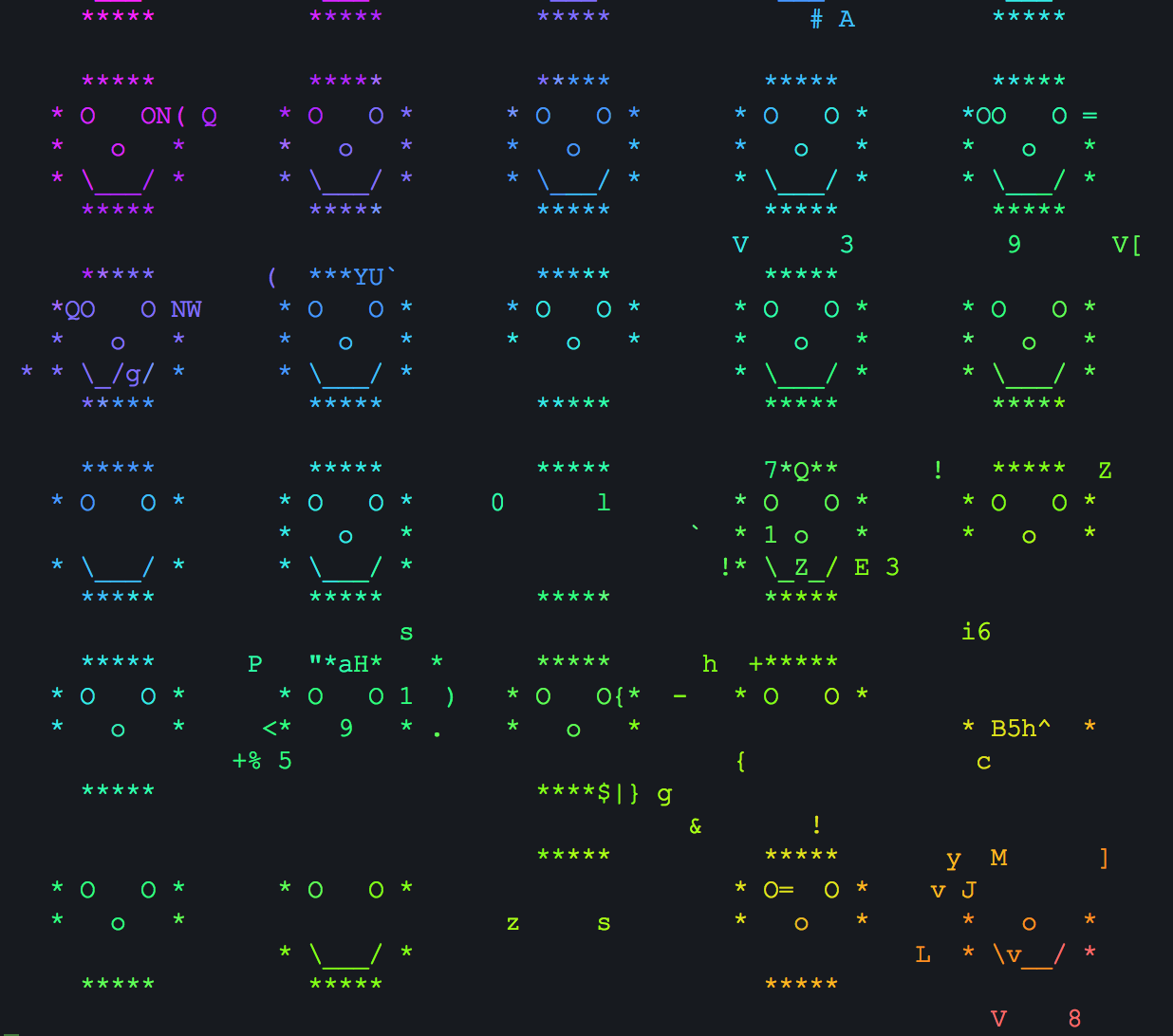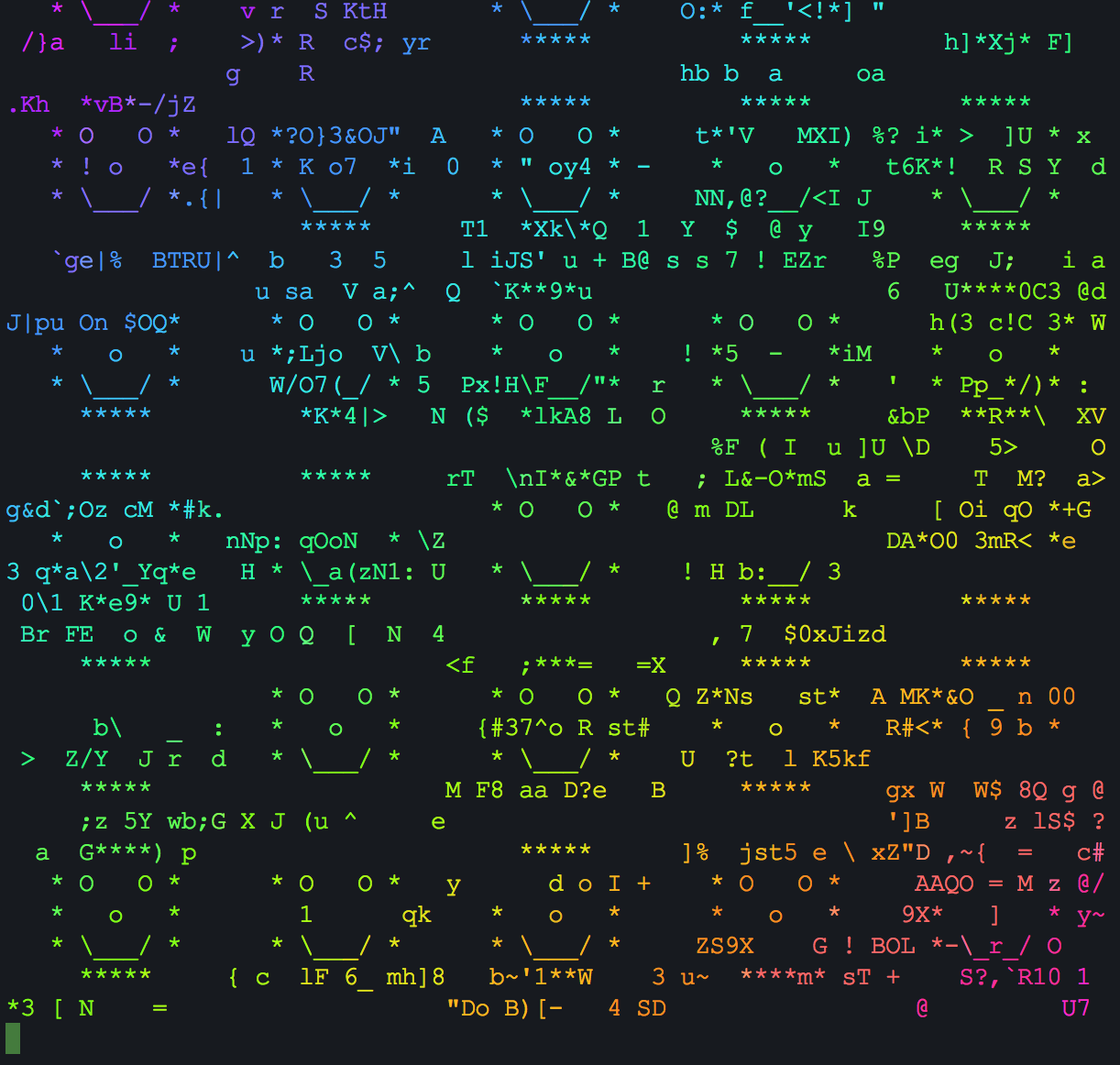A script to infinitely scroll a piece of text or ascii art, with added textual noise. Useful for decoration, meditation, etc.
The script reads the input, pads it so all lines are of equal length, and then scrolls an infinitely repeating grid of the input. The added noise takes the form of a set of noise characters that randomly replace input characters, as well as randomly dropped lines. The rate at which this happens will vary randomly over time.
$ python3 noisify.py [FILENAME]
Text can be read in via standard input or a file.
For best results, add rainbow colors to the text by piping the result through lolcat:
$ python3 noisify.py --term-width=80 example.txt | lolcat
Or after the noise ramps up a bit more:
Several parameters will randomly vary (increase or decrease by an internally defined increment) after each line is printed:
- The rate of scrolling (number of seconds to sleep between each line)
- The level of noise (chance of replacing an input character with a noise character)
- The chance of a line not being dropped (masked by spaces)
- A parameter called bumper, which, when above a certain threshold, causes
rateto decrease (speed up) andchanceto increase
The values of these parameters can be displayed with the --debug option.
Show help message and exit.
Don't add noise, and don't drop lines. Useful for verifying that the input is being read in correctly.
Add a running display of the values of Rate (R), Chance (C), Bumper (B), and Noise (N) to each printed line. It will look like:
R2.0 C0.25 B0.51 N0.61| (noisified output...)
When displaying directly to the terminal, it will get the terminal's width in order to determine how many repeating columns of the input it can display. If the output is being piped to another program (such as lolcat), it won't be able to get the terminal width, so it will need to be explicitly set with --term-width. In order to easily determine what value to use, the --show-term-width option will cause noisify to print the terminal width and exit.
$ python3 noisify.py example.txt | lolcat
Couldn't get terminal width. If you're sending the
output to another program, you may need to explicitly
specify the terminal width using --term-width=<number>.
You can find the terminal width with --show-term-width.
$ python3 noisify.py --show-term-width
126
$ python3 noisify.py example.txt --term-width=126 | lolcat
(noisified, rainbow colored output)
Before producing output, noisify.py reads in the entire file or standard input until end of file (Ctrl+D if you're typing the input directly), so it won't currently handle an infinite stream of input.

